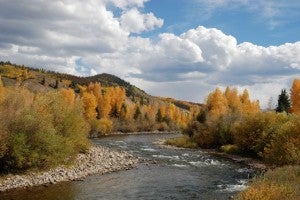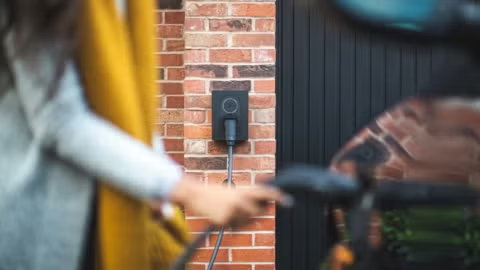Critical Decision Expected Tomorrow in Colorado on Clean Air Rule

Day 4 of the ongoing hearings on a groundbreaking proposal to reduce air and climate pollution from oil and gas operations in Colorado saw Team EDF pushing back on claims opposition groups have made to try to weaken the proposal.
Leading companies Noble, Anadarko, Encana and DCP also put on strong cases, using their own operational data to show the proposal is cost effective. They should be lauded for their leadership, as should local governments and conservation groups that brought strong analytics to the hearings.
If the proposal is adopted without being weakened, it will eliminate more than 90,000 tons of smog-forming VOCs annually (the same amount produced by all the cars and trucks in Colorado) and more than 100,000 tons of methane, a highly potent greenhouse gas.
EDF worked with the state’s leading oil and gas companies, regulators and others to help develop the proposal. Those multi-stakeholder discussions produced a proposal that’s both tough and reasonable – one that is right-sized to place the toughest requirements on operations with the greatest pollution potential, while making sure smaller operators can keep running a profitable business.
Governor Hickenlooper endorsed the proposal last fall, and editorial boards around the state have been calling for adopting the rule without clawbacks. But that hasn’t stopped an industry opposition group from trying to weaken the rule.
The opposition group put forward some alarming numbers over the last couple of days, telling members of the Air Quality Control Commission that the proposal would surely result in thousands of wells being closed down. The problem is their analysis is replete with flaws.
Industry Claim: Smaller “dry gas” wells without valuable oil or natural gas liquids, such as Coal Bed Methane wells, are economically marginal and can’t support the cost of a host of new requirements.
The Facts: Most of the requirements in the proposal wouldn’t apply to these wells, since they’re geared toward equipment these wells don’t have. And the leak detection and repair (LDAR) requirements for catching and fixing fugitive emissions are relaxed for these small wells – typically involving a one-time cost of a few hundred dollars, and then just regular checks when operators are already on-site.
Industry Claim: Thousands of wells producing two barrels of oil per-day or less will have to be shut down under this program.
The Facts: The economic analysis put forward to support this claim is flawed on multiple counts. It ignores the revenue that comes from natural gas produced by these same wells. It has double-counting problems. It misapplies basic economic principles like Net Present Value in a way that grossly distorts the results. And it uses cost assumptions that are way out of line with actual cost data coming from industry itself. In fact, if the opposition group’s analysis were accurate, it would mean almost 60 percent of these wells would already be shut down today.

Industry Claim: After you find and fix equipment leaks initially, you don’t really see many new leaks, so operators should be allowed to decrease the frequency of LDAR inspections designed to locate and repair leaks.
The Facts: It’s true that the highest number of leaks is found at first; however, they keep happening over time as equipment is stressed by weather, operational conditions and the second law of thermodynamics – which tells us that stuff falls apart. Study data presented to the Commission showed that leak rates remain low over time precisely because of requirements to do regular, frequent inspections. And data Encana Corporation presented based on their own operations showed that maintaining a frequent inspection schedule is exactly how they’ve been able to keep leaks down at their well sites.
The Air Quality Control Commission has now heard four long days of testimony. Tomorrow they’ll deliberate and, we expect, will make their decisions. We hope they won’t be swayed by the opposition’s analysis. It just doesn’t hold water.The proposal before them is supported by the state’s leading oil and gas operators – companies that are committed to being responsible partners in Colorado’s future. It’s supported by environmental groups, local governments, citizen groups and businesses that rely on a clean environment for their success. It’s supported by the state regulators who are charged with making sure environmental protection measures are cost effective. And it’s wholeheartedly supported by Governor Hickenlooper.
Moments like these –when a broad group of stakeholders can come together and agree on difficult, complex questions – are rare. Now is the time to honor all the hard work and cooperation that went into developing this proposal and adopt it in whole, without changes that will weaken it.












